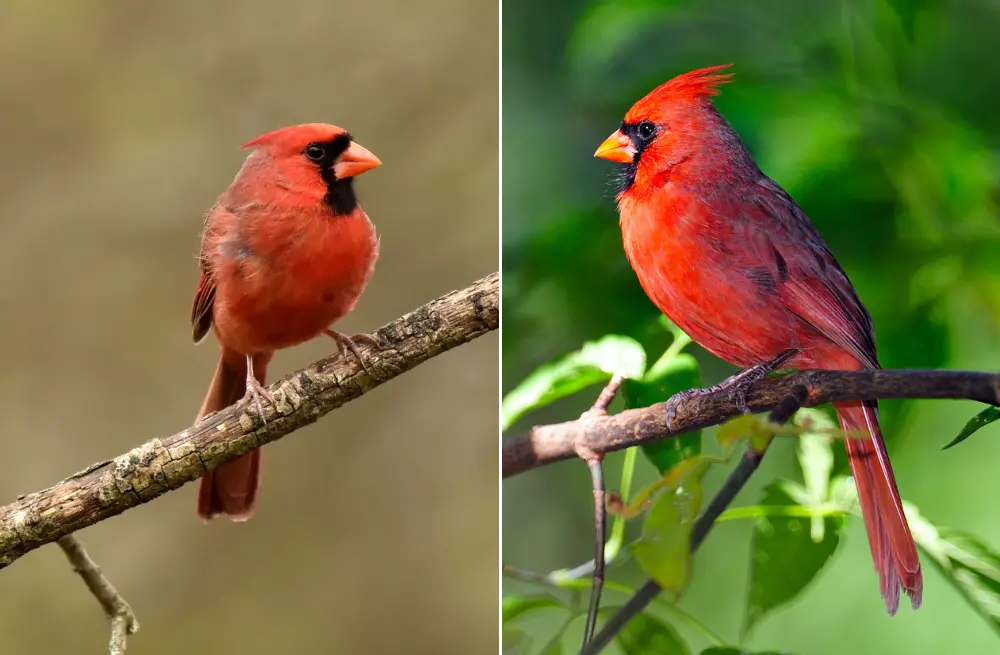Bird enthusiasts and hunters often come across various species of partridges, some of which can be similar in appearance. Two such species are the Chukar and the Red-Legged Partridge. While they share some common characteristics, distinct differences set them apart.
The Chukar and the Red-Legged Partridge differ in physical appearance, leg color, habitat, and vocalizations. The Chukar has a grayish-brown back, while the Red-Legged Partridge has a reddish-brown back.
The Chukar has gray legs, while the Red-Legged Partridge has reddish-orange legs. The Chukar inhabits arid and rocky terrains in southwestern Asia, while the Red-Legged Partridge is native to the Iberian Peninsula.
The Chukar’s call is “chuk-chuk-chukar,” while the Red-Legged Partridge’s call is “Kiri Kiri-Kiri Kiri.” These differences highlight their unique characteristics and adaptations.
Let’s delve into the differences between these two captivating birds. Ready to begin?
What is the Difference Between a Chukar and a Red-Legged Partridge?
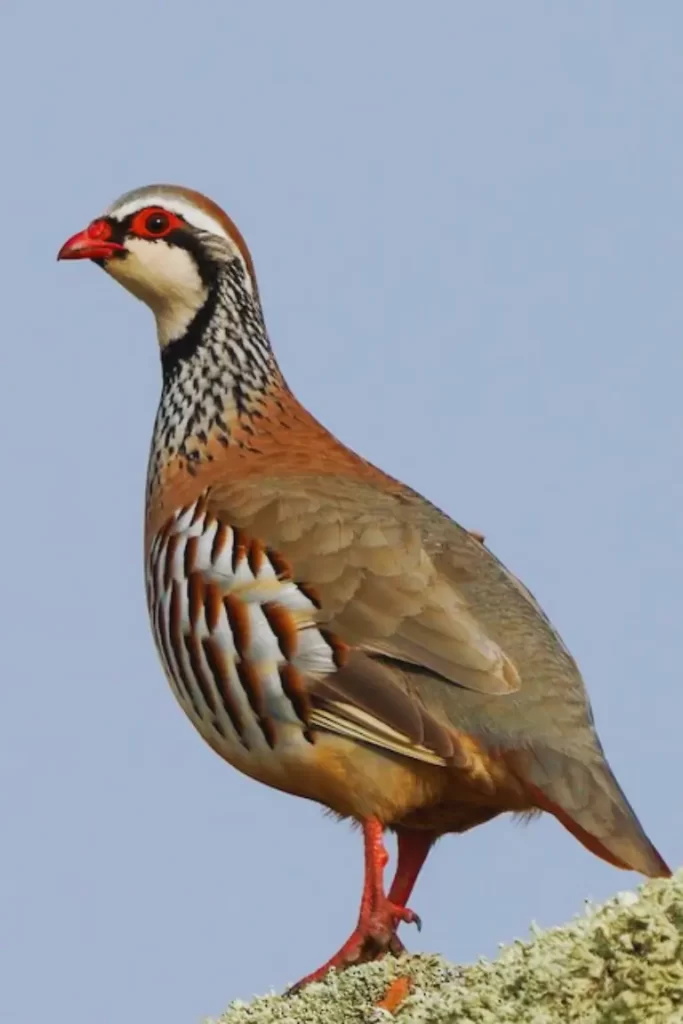
Physical Appearance
The Chukar (Alectoris chukar) and the Red-legged Partridge (Alectoris rufa) both belong to the same family, Phasianidae and share a similar body shape. However, their coloring and distinctive features differ.
The Chukar has a plump body with a grayish-brown back, a chestnut-colored face, and a black-streaked white throat. Its flanks display intricate patterns of black, white, and chestnut stripes.
On the other hand, the Red-Legged Partridge showcases a reddish-brown back, grayish sides, and a white belly. Its face is characterized by a white throat patch and a black band across its eyes. These distinguishing characteristics contribute to the unique beauty of each species.
Leg Color
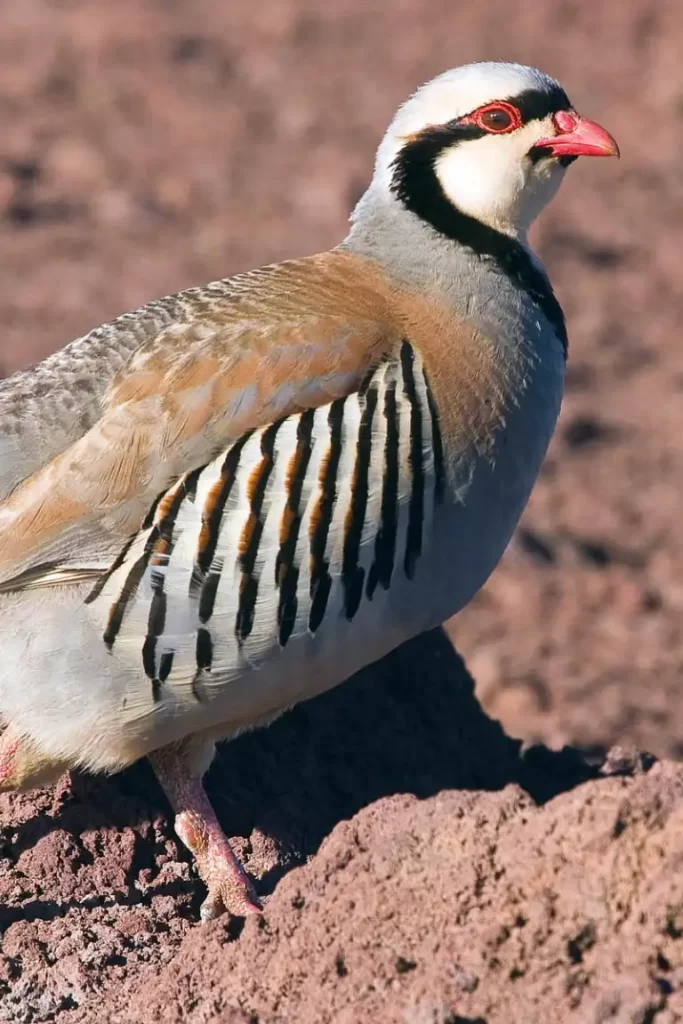
As the name suggests, one of the most apparent differences between the Chukar and the Red-Legged Partridge lies in their legs. The Chukar has gray legs, blending with its habitat for camouflage. In contrast, the Red-Legged Partridge has striking reddish-orange legs, easily distinguishing it.
The leg colors serve as prominent features for identification and may play a role in courtship displays or social interactions.
This variation reflects their adaptations and ecological preferences. Whether it’s the Chukar’s subtle gray or the Red-Legged Partridge’s vibrant reddish-orange, leg color adds to the unique charm of these fascinating birds.
Habitat and Geographic Distribution
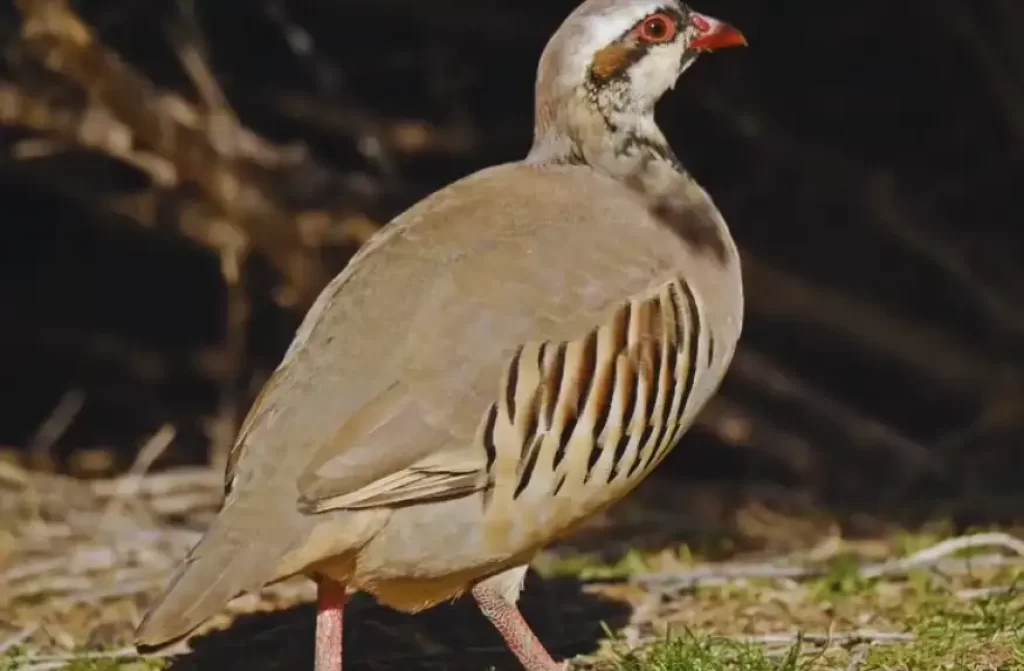
The Chukar and the Red-Legged Partridge have distinct geographic distributions and habitat preferences.
The Chukar is primarily found in arid and rocky terrains across southwestern Asia, including countries such as Pakistan, India, Afghanistan, and Iran. Due to its popularity as a game bird, it has also been introduced to various other parts of the world for hunting purposes.
On the other hand, the Red-Legged Partridge is native to the Iberian Peninsula, encompassing Spain, Portugal, and parts of France.
It has adapted to the Mediterranean climate and habitats of this region. The Red-Legged Partridge has also been introduced to several other European countries and beyond, primarily for hunting and establishing game populations.
These divergent geographic distributions reflect the unique environmental conditions and ecosystems to which each species has become adapted.
The Chukar thrives in arid and rocky landscapes, utilizing their agility to navigate challenging terrains.
In contrast, the Red-Legged Partridge is well-suited to the Mediterranean landscapes of the Iberian Peninsula, where it can find suitable food sources and shelter.
Introducing both species to new areas for hunting has allowed them to establish populations outside their native ranges. This has provided opportunities for enthusiasts and hunters in different parts of the world to encounter these captivating birds.
Vocalizations
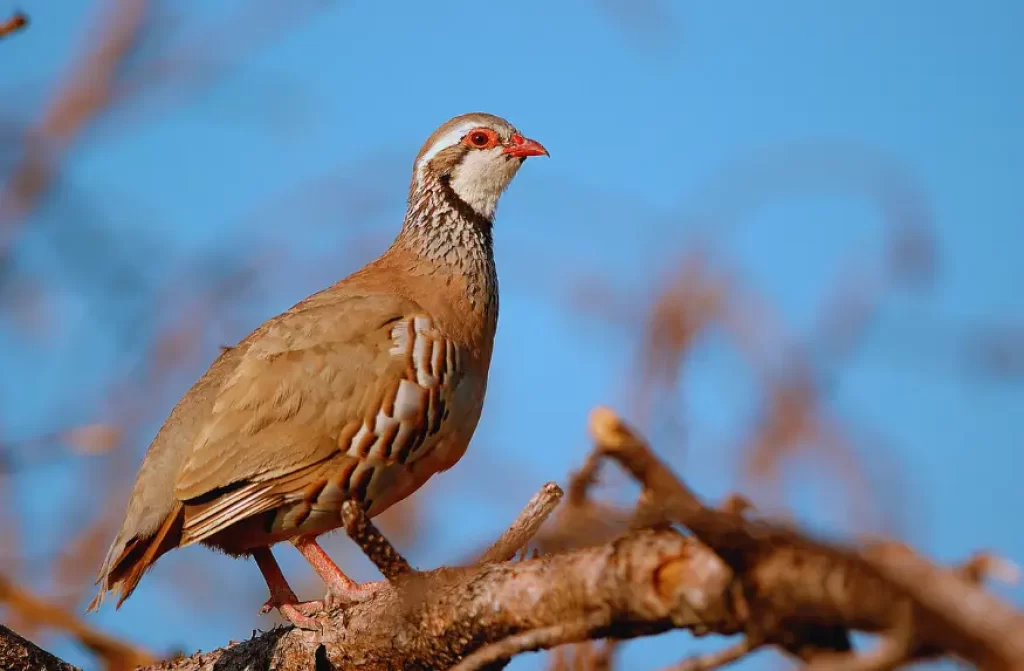
Vocalizations provide another point of differentiation between the Chukar and the Red-Legged Partridge. The Chukar is known for its distinctive call, which consists of a rhythmic “chunk-chuk-chukar” sound.
This call resonates through the mountainous regions where it typically resides. It serves as a means of communication between individuals, helping to maintain social cohesion within Chukar populations.
In contrast, the Red-Legged Partridge has a vocalization characterized by a repetitive and rapid “Kiri Kiri-Kiri Kiri” call. This call is distinct to the species and is used for communication purposes, including territorial signaling and attracting mates.
The variations in their vocalizations not only contribute to the unique auditory landscape of their respective habitats but also play a role in species recognition and communication within their populations.
These vocalizations are essential to their behavioral repertoire and allow individuals to convey information about their presence, intentions, and social interactions.
Behavior and Adaptations
Although both birds share similar behaviors, there are some differences worth noting.
The Chukar is known for its agility and ability to navigate steep, rocky terrain swiftly. It often takes flight when startled, employing rapid wingbeats and glides to escape predators.
The Red-Legged Partridge, on the other hand, is a ground-dwelling bird and relies more on its ability to run and hide rather than take to the air. It is well-adapted to agricultural landscapes and utilizes cover crops and hedgerows for shelter.
Is grouse the same as partridge?
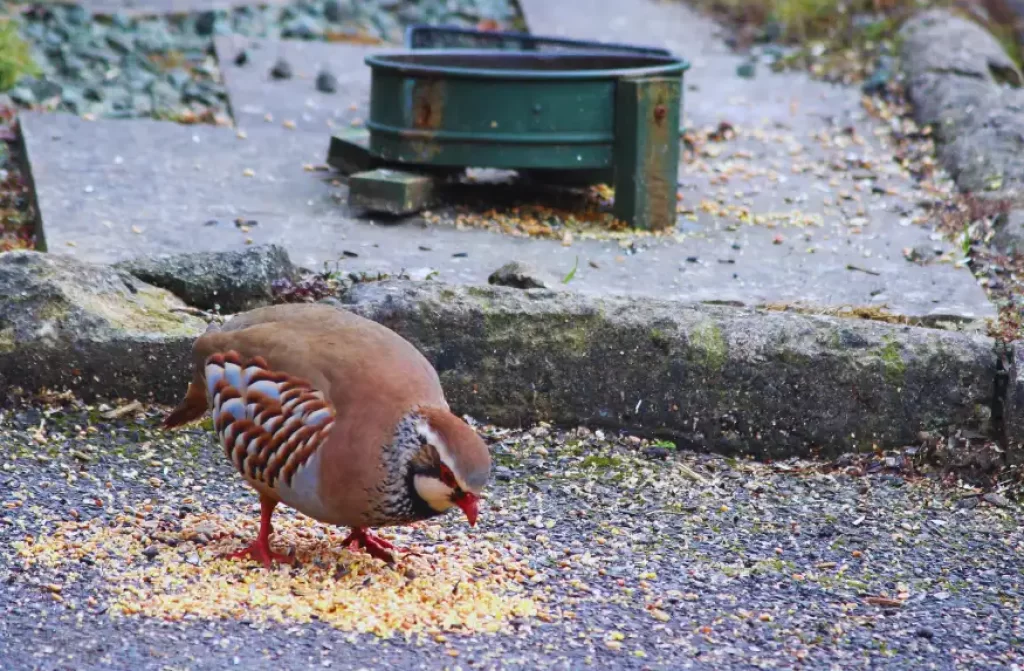
No, grouse and partridge are not the same. While they both belong to the order Galliformes and share similarities in their appearance, behavior, and habitat preferences, they are separate groups of birds with distinct taxonomic classifications.
Grouse refers to a group of medium to large-sized game birds typically found in forested or mountainous regions. They are known for their elaborate courtship displays and drumming sounds. Examples of grouse species include the Ruffed Grouse, Spruce Grouse, and Sage Grouse.
Conversely, Partridge refers to a group of birds within the pheasant family, Phasianidae. They are generally smaller than grouse and are known for their rounded bodies, short wings, and strong legs.
Partridges often inhabit grasslands, open woodlands, and agricultural areas. Examples of partridge species include the Chukar, Red-Legged Partridge, and Grey Partridge.
While grouse and partridge are popular among hunters and are valued for their game meat, they are distinct groups with unique characteristics and species.
What is a flock of partridges called?
A flock of partridges is commonly referred to as a covey. The term “covey” is used to describe a small group or gathering of birds, especially game birds like partridges.
Partridges, known for their social behavior, often congregate in coveys for various purposes, including foraging, protection, and social interaction. These coveys can vary in size and may consist of several individuals.
Is partridge the same as quail?

While partridges and quails are similar in appearance and belong to the same order Galliformes, they are distinct groups of birds with some notable differences.
Partridges belong to the family Phasianidae, which includes various species like the Chukar, Red-Legged Partridge, and Grey Partridge.
They are medium-sized game birds known for their rounded bodies, short wings, and strong legs. Partridges are typically found in grasslands, open woodlands, and agricultural areas.
On the other hand, quails belong to the family Odontophoridae or Phasianidae, depending on the specific species.
They are smaller birds with compact bodies known for their distinctive plumage patterns, including scaled or mottled appearances.
Quails are often found in various habitats, such as grasslands, brushy areas, and agricultural fields.
While partridges and quails share similarities in ground-dwelling habits, social behavior, and game bird status, they are separate groups of birds with different taxonomic classifications.
Additionally, there are specific species of partridges and quails that have their unique characteristics and distributions.
Conclusion
While the Chukar and the Red-Legged Partridge may have a few similarities in terms of body shape and behavior, their distinct differences set them apart.
From their physical appearance, leg color, and vocalizations to their preferred habitats and geographical distribution, each bird possesses unique characteristics that make it identifiable to keen observers.
So, the next time you encounter these fascinating partridges, you’ll be able to appreciate and differentiate between the Chukar and the Red-Legged Partridge more effectively.





